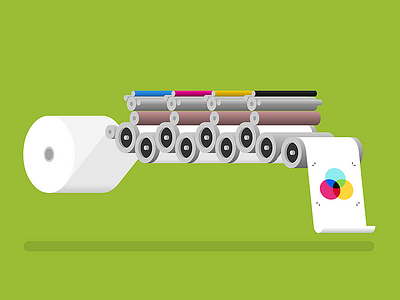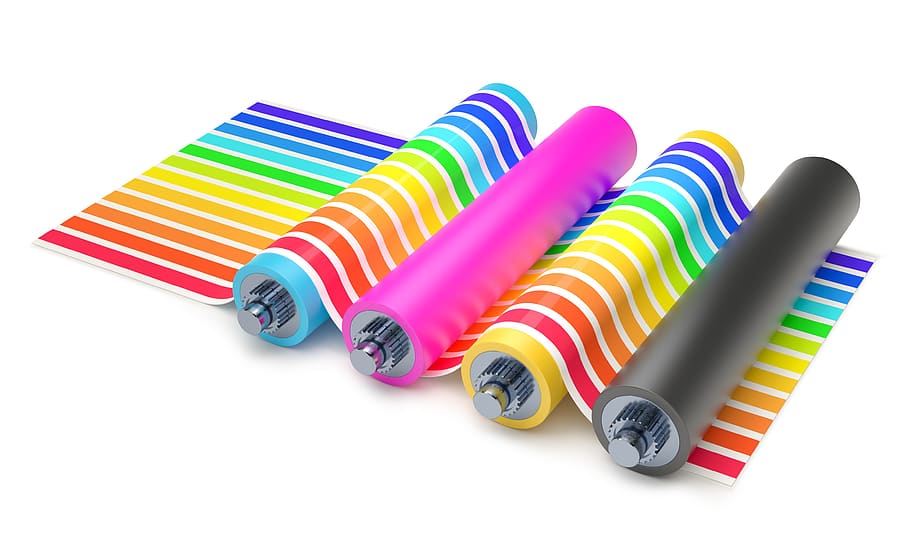Offset Printing Technique

In commercial printing, offset printing, also known as offset lithography or litho-offset, is a commonly used printing process in which an inked image on a printing plate is printed on a rubber cylinder before being transferred (i.e., offset) to paper or other medium. The rubber cylinder allows for a wide range of printing applications, including wood, fabric, metal, leather, and rough paper. Ira W. Rubel of Nutley, New Jersey, discovered the method by accident in 1904 and quickly built a press to use it.

The subject to be printed in offset printing is neither elevated above the surface of the printing plate (as in letterpress) nor sunk below it (as in screen printing) (as in intaglio, or gravure, printing). Instead, it is flush with the plate’s surface, classifying offset as a planographic printing process.

As a development of lithography (q.v. ), offset printing is founded on the idea that water and grease do not mix, allowing a greasy ink to be deposited on grease-treated printing portions of the plate while nonprinting parts, which contain water, reject the ink. The offset plate is generally made of zinc, aluminium, or a mixture of metals, with a porous surface that is subsequently covered with a photosensitive substance. The coating on printing regions hardens when exposed to an image; the coating on nonprinting parts is washed away, leaving wetted metal that rejects ink.

A modern offset printing press consists of three spinning cylinders: a plate cylinder, which holds the metal plate; a blanket cylinder, which is covered by a sheet of rubber; and an impression cylinder, which pushes the paper against the blanket cylinder. The plate cylinder is initially in touch with a set of moistening rollers, which deposit moisture into the metal’s granulations. The plate is then passed through a sequence of inking rollers, with the ink being rejected by the water-holding regions and accepted by the greasy image. The inked picture is transferred to the rubber blanket, which is offset to the paper as it travels around the imprint cylinder.
For Offset Printing Services Contact Us http://www.truecolours.pk
Comments
Post a Comment